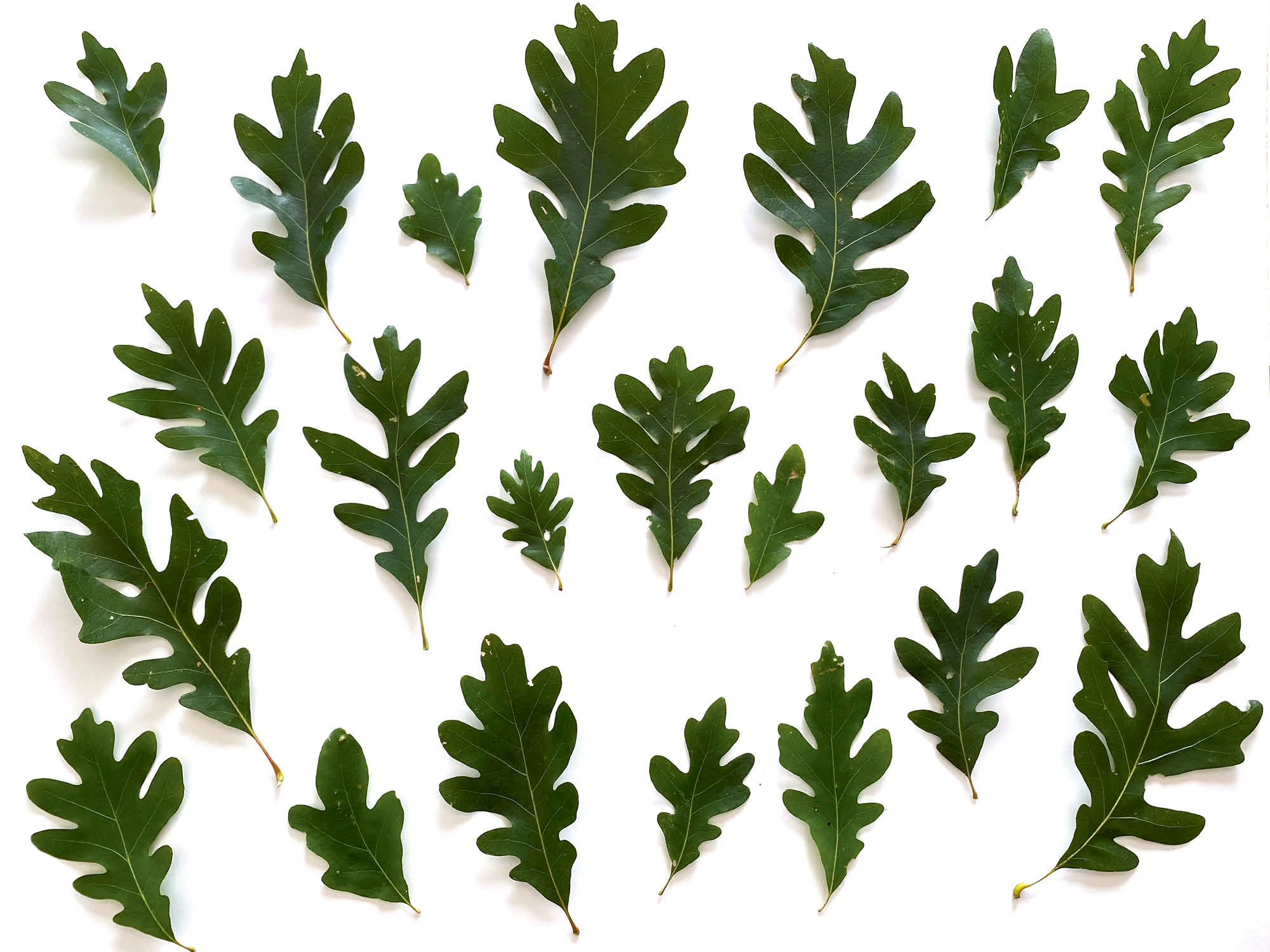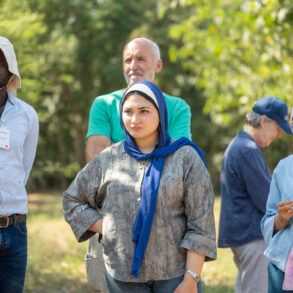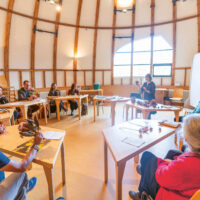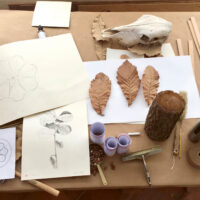Separate entities can either compete or develop strategies to cooperate. In either case, the starting point is separation. This is a foundational assumption of modern biology. But what if relatedness is more fundamental? How would we behold living beings and what we call their environment?
When you go out into nature and see an oak, that tree is not something isolated in the world. It’s something that grows up out of the earth and is connected with the Earth. Yet, we can immediately identify it as an oak tree and not a maple or a birch. So, there is an element of identity and, at the same time, connectedness with something much greater that we call the Earth. If a tree attracts our attention and we get interested, then we can get closer to it. We can start paying attention to its details, to what it has to show, and we begin a pathway of conversation with this organism, this tree.
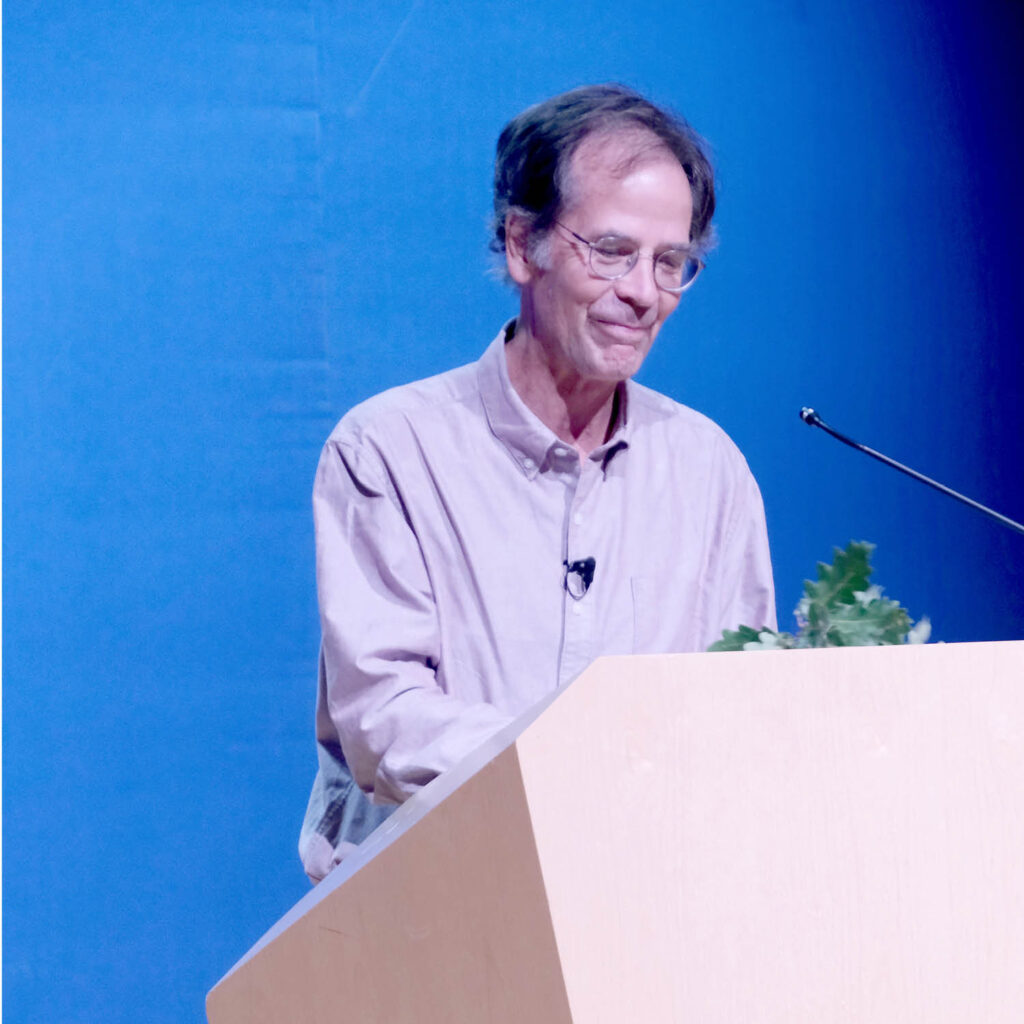
There are many ways to do this. We can begin with a leaf. This is a leaf from the American White Oak (Quercus alba), a species from the eastern United States and Canada. If we start paying attention to just one detail, it’s an invitation to stay with the phenomenon and enter into it—to look carefully at the form, be with the form, and move with the form. We can follow how it spreads in a sort of rhythmic way, with the lobes and sinuses. We can see the patterns of the veins, the qualities of green, and the textures. Through details we enter into the characteristics of this particular leaf, which itself is one expression of the tree.
Then, we can ask: How does it live in me now, in my imagination? I’ve gone out to the tree, and now there’s something of the tree, through its leaf, in me. I can revisit it and recreate it in my imagination when I picture the texture of the leaf, the short, stout leaf stalk, the way the leaf spreads and contracts, and the quality of the green—all in my imagination, as carefully as possible. This activity brings to life what the tree has left with me. This is what Goethe called exact sensorial imagination (“exakte sinnliche Fantasie”). It is a practice through which we begin to be with something, not only think about it from a distance—to be with it now.
A tree is, of course, much more than one leaf. So we can look at a second leaf from the same branch: it’s the same, but it’s different. We can go into the second leaf—its shape, its form, its texture, its color—and then we can move back and forth between the two. When we go to a third leaf from the same branch, it begins to be a bit more difficult to articulate what a typical White Oak leaf actually is. How do I describe that?
We could ask, what does a White Oak leaf look like? A field guide states: rounded lobes, usually 7 to 9 lobes per leaf; sinuses that are 1/3 to 7/8 of the length to the midrib; a wedge-shaped base; a short, stout leaf stalk; a smooth surface; light grey-green when mature. Does that do justice to the leaf we see? Of course not. But it helps us to identify the tree. We’re happy to have such descriptions, but this is not enough. Consider this from the tree’s point of view: imagine that every year, it loses its leaves in the winter, forms new buds, and then forms thousands of new leaves, each different and each White Oak. This oak tree is an amazingly creative creature in its ability to be itself differently in so many different leaves. And yet, in each leaf, something the same, which we could call its identity, is expressing itself. In every leaf and in every leaf, differently.
Creative Potency
So over time, especially if we inwardly move the details on a few leaves, we begin to appreciate more and more that the tree is creative. This creativity is a potency to always remain itself and yet to bring forth itself in manifold expressions. This diversity in the different end forms is one aspect. The other aspect is that these are all brought forth by what we would call a uniform being: this oak tree. That “uniformity” is not something general and abstract. It is a creative potency that expresses itself in every leaf but is never bounded by what has already appeared. There are many other forms possible. This potency is greater than what comes to appearance. The identity of the tree is sensory and super sensory, visible and invisible. We can only begin to get an inkling of what this identity is by moving through the diversity and beginning to see the unifying gesture that is in all the parts.
The more we can be with the diversity—I’m speaking now about organismic life—the more the creative potency of nature can show itself. This is the shift from thinking about the product, Natura naturata, to being with the process, Natura naturans.
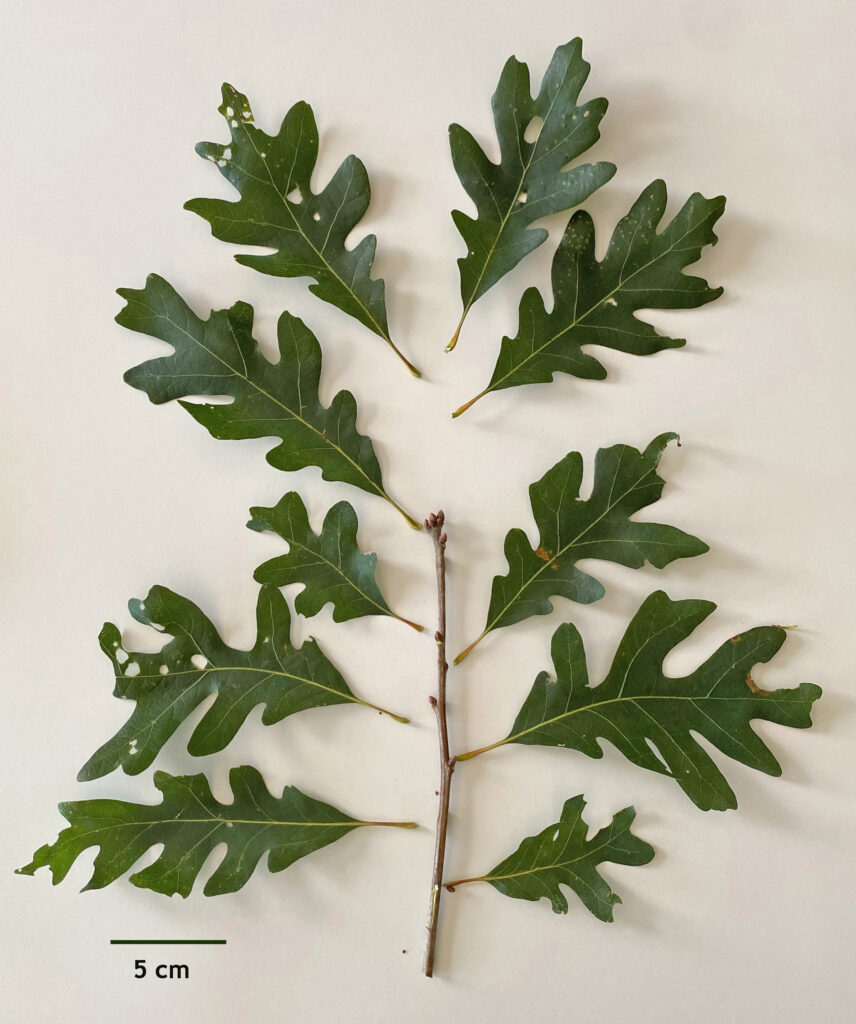
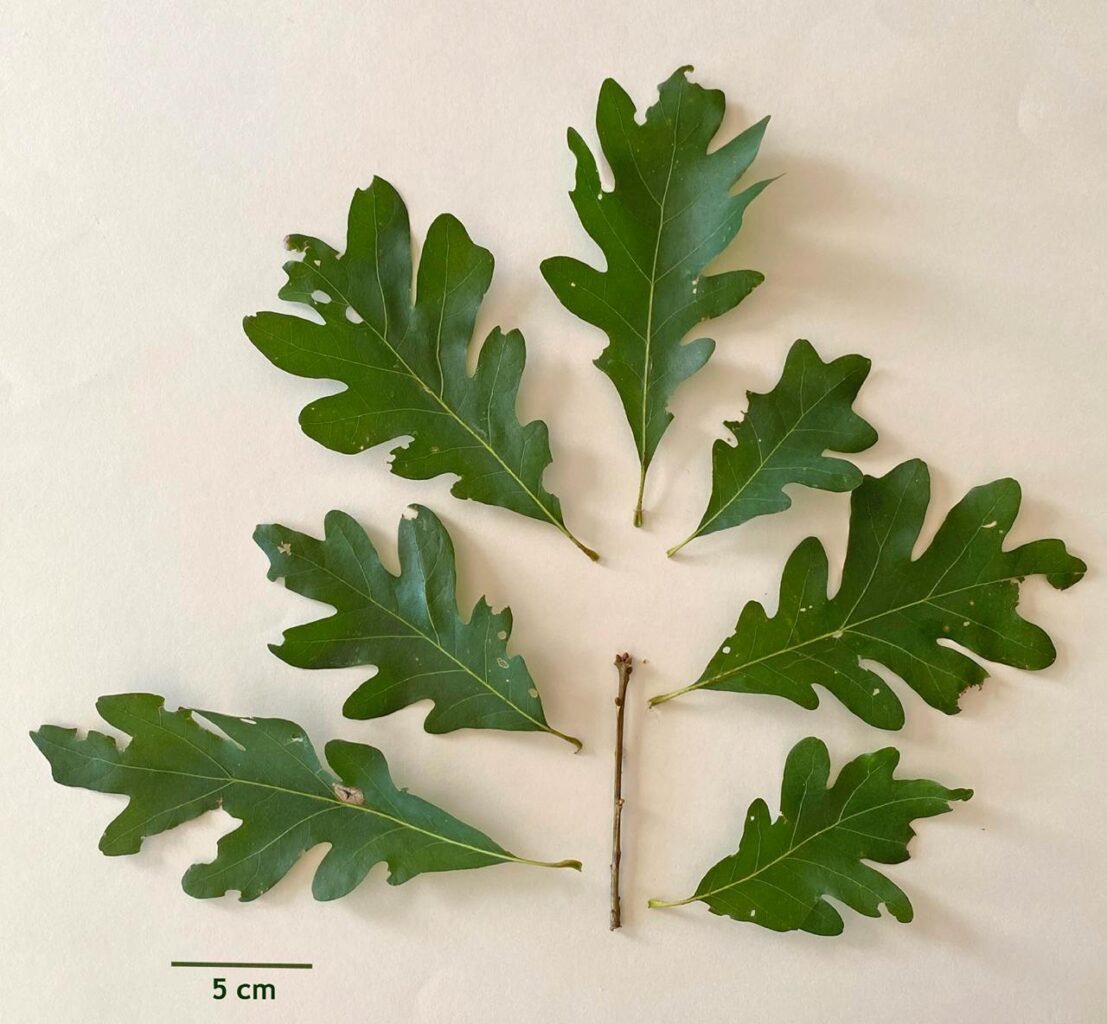
White Oak leaves from twigs on the same tree: growing in full sun (left) and in the shade (right), Photo: Craig Holdrege
Where Does an Oak Tree End?
We can look at two sets of oak leaves taken from the ends of twigs on the same tree. One twig was at the end of a branch that was in the sunlight, the other on a branch that was closer to the trunk of the tree, back in the shade of its crown.
Here, we begin to see how the variety in the forms is related to that mysterious thing we call “the environment.” We can see that the tree can be itself differently out of its own creative playfulness and also in relation to the world in which it is living and through which it lives—through the light, air, water, warmth, and minerals in the soil. What we call the environment comes to expression in the way the tree becomes itself differently.
The drawings show a White Oak tree that grew at the edge of a meadow, backing onto a forest in the winter. The other grew about 100m away, down in the valley next to the creek in the forest. So again, we can say that what we often view as the “typical” oak form, freestanding, is only one expression of the way oaks grow, depending on their context.
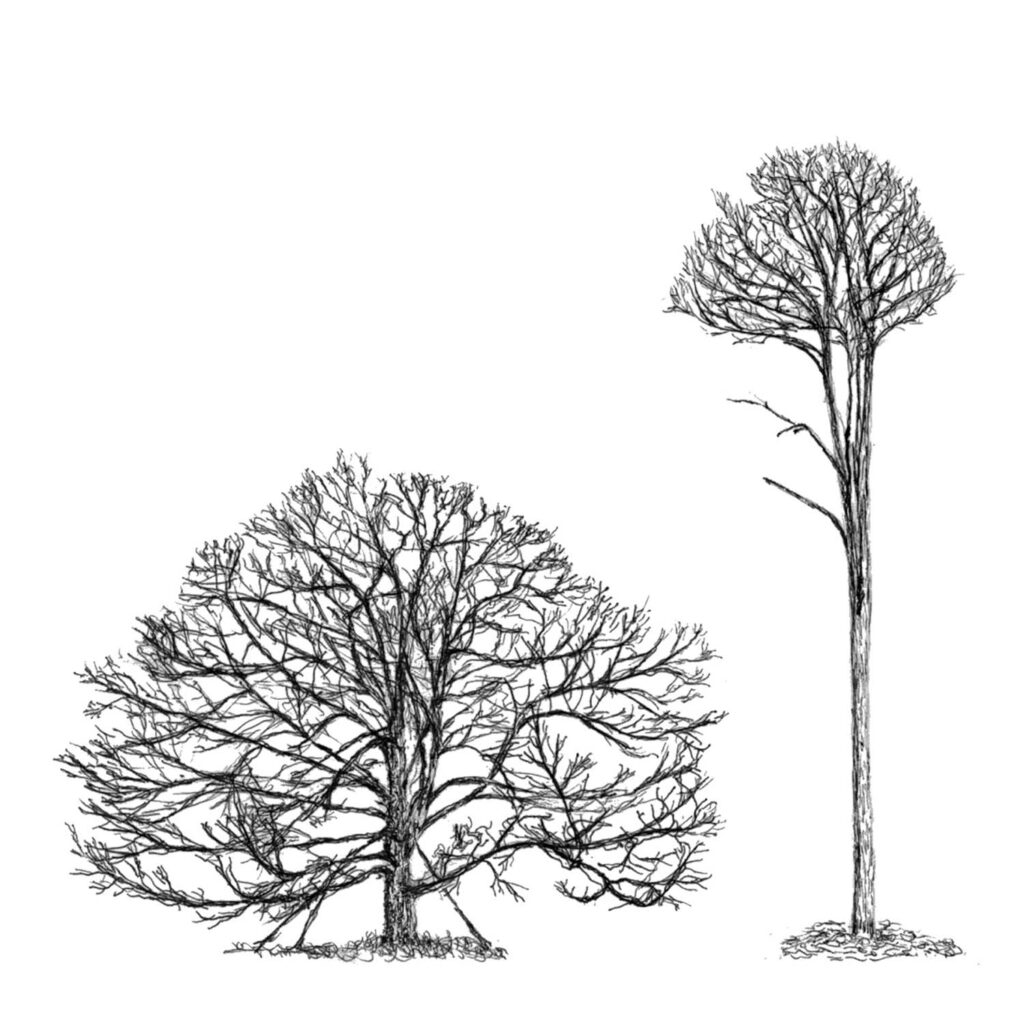
The oak is being itself differently in relation to what we call context or environment. I want to push here on my own boundaries of understanding and develop the concept of environment or context more vividly. We need to see that the environment is not “outside” the tree. Any tree (or any other plant) plant can only develop through the characteristics of what I’m going to call the elemental life world—air, water, light, warmth, minerals. Without this life world, the tree would not be. It would not realize its identity, and its diversity would not arise.
Belonging Together
We can distinguish organism and environment; we do it all the time. But they belong together. We can’t actually get any closer to the living world unless we think them together, as difficult as that is. There’s a lovely quote from Goethe: “Wär‘ nicht das Auge sonnenhaft, wie könnten wir das Licht erblicken?” [If the eye were not sun-like, how could we see the light?] In less poetic form, I’d like to expand this insight: “Were the plant not sun-, air-, and water-like, how could it become itself?” For me, the sense has become stronger and stronger that we cannot keep thinking about things as if they were separate from each other. They are not! There is no real separateness in the world other than in our abstract concepts. The living world is a world of belongingness, of fundamental connectedness, and within that, there is the differentiation, the diversity. There are many other aspects of belonging together, including the whole animal world of oaks, symbiosis, and much more that I can’t go into here. The identity of something is always connected with a larger context: the world to which it belongs and the world which it brings to expression.
Creating Together—Sympoiesis
I want to highlight more radically the nature of relational understanding. We can say: an oak tree grows out of an acorn; a plant grows out of its seed. That seems self-evident. It is correct, but it is also wrong. What’s missing is the other half. We also need to say: The environment becomes the oak through the acorn. If we can’t think those two together, we don’t have the living world, the etheric world. This is where we need, on the one hand, the careful attention to details—the qualities of the acorn, the qualities of the leaves, the way the tree branches—what we could call the centered perspective. And on the other hand, we need to realize that everything “centered” is only real through the connectedness with a larger world of context—with a peripheral reality. We need to hold the two aspects at the same time. That is why I chose to use the word “sympoiesis” for my title. The word was made popular in the English-speaking world by Donna Haraway, a philosopher with a biological background. She started using the word in 2016. It comes from the Greek: “creating together”. This creating together is a fundamental aspect of life in which there is identity and diversity. What creates together also belongs together.
Is it possible to come to see belongingness, belonging together, and to overcome “separateness thinking,” which always begins with a “this” or a “that” (separate entities) and then asks how they relate to each other? Of course, the relatedness of things poses riddles for us: we don’t see all the connections. But when we always imagine separate and antagonistic entities out there in the life world, which “must” find ways of competing, cooperating, or other strategies to survive, then we have created a problem by the way we view life. That’s our problem. I don’t think that’s the world’s problem.
A Question
I want to end with a question. By diving into the diversity of forms and qualities of different organisms and their environmental belonging, we can develop a more living picture of organisms. We can find, for example, that there isn’t as strong a diversity in the forms of maple leaves as there is in oaks. That tells us something about oaks and maples. And then there’s the specificity of formative tendencies in the maple or the oak, which we can only grasp as a kind of gestural movement. This gestural quality is not something we can adequately understand if we relate it only to what we call the elemental life environment. Through understanding air, light, and water relations, we only begin to approach the oakness of oak, the mapleness of maple, or the birchness of birch.
There are some 90 species of oaks in the U.S. and Canada and over 150 species in Mexico. They vary widely in their characteristics—leaves, bark, size, and shapes of their crowns, and habitats. Some are bushes, others towering trees. Leaves of some oaks look like willow leaves, while others resemble holly leaves. Thank goodness for acorns! Through its acorns, you can be sure it is an oak tree. There is a specificity to acorns that is recognizable, even though they also vary in shape, proportions, and size. The acorns point to a quality of identity that is not so strongly bound up with the environmental life world.
And that leads to the question I’d like to end with. If it’s true that everything particular belongs to a larger context and brings that context to expression—if sympoiesis is a reality—then what is the context for those deeper characteristics of oakness, of mapleness, of birchness? To which aspects of the creative world do they belong? What is the larger context that I’ve only begun to approach and that reaches beyond the life-world? I have a sense that there is a further dimension of world-relatedness that might reveal itself with more work and insight. Hopefully. Thank you.
This is a shortened and lightly edited version of the talk given at the conference.
More Natural Science Section: Evolving Science 2024, The Nature Institute

